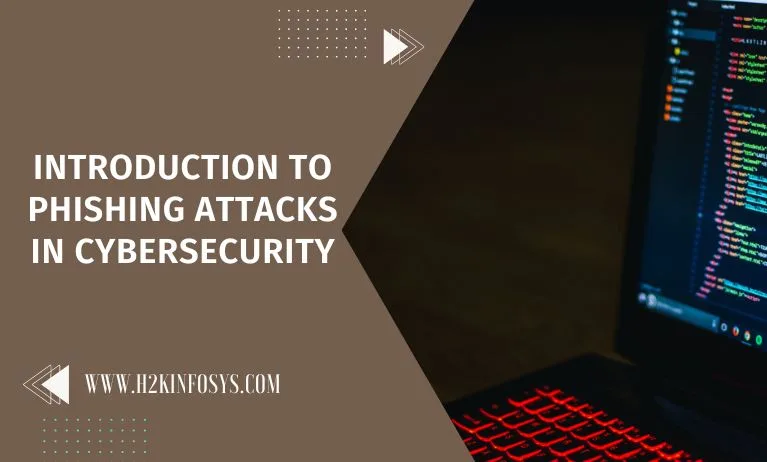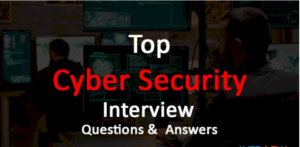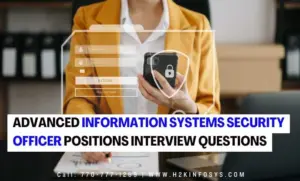A message sent via email, social media, or another electronic communication channel is the fundamental component of a phishing assault. A phisher might use social networks in particular to gather background data about the victim’s professional and personal Cybersecurity history. These sources are used to compile data about the potential victim, including name, occupation, email address, interests, and actions. The phisher can then make a trustworthy phoney message using this information.
Emails that the victim receives frequently seem to be from well-known people or organisations. Attacks are launched via links to rogue websites or malicious attachments. Attackers frequently create phoney websites that look like they are run by reputable organisations like the victim’s bank, place of employment, or institution. Attackers try to gather sensitive data from these websites, such as payment information or usernames and passwords.

Poor wording, and incorrect use of typefaces, logos, and layouts can make certain phishing emails easy to spot. However, a lot of online crooks are getting better at making communications look genuine, and they’re utilising expert marketing strategies to assess and enhance the success of their emails. Check out the cyber security training course to know about Phishing attacks.
5 Types of Phishing Attacks
1.Email Phishing
Email is where most phishing attempts are sent. Attackers generally create fictitious domain names that resemble actual businesses and bombard their targets with tens of thousands of repetitive requests.
Attackers may utilise subdomains (such as mybank.host.com) or the name of a reputable company as the email username (such as [email protected]) to create false domains by adding or replacing characters (e.g., my-bank.com instead of mybank.com).
Many phishing emails create a sense of urgency or a threat to get the recipient to act immediately without verifying the email’s legitimacy or source.
One of the following is the aim of email phishing messages:
- enticing the user to click a link that will take them to a fraudulent website in order to download malware.
- causing a user to download a malicious file and then exploiting that file to distribute malware
- influencing the user to click a link to a fraudulent website and provide their personal information.
- provoking the user to respond and give personal information.
2.Spear Phishing
Malicious emails delivered to certain individuals are referred to as spear phishing. Typically, the assailant already knows some or all of the following facts about the victim:
- Name
- Place of employment
- Job title
- Email address
- Specific information about their job role
- Trusted colleagues, family members, or other contacts, and samples of their writing
By using this knowledge, phishing emails can trick recipients into actions like money transfers and boost their effectiveness.
3.Whaling
Attacks on top management and other privileged positions are known as whaling. Whaling attacks have the same general objective as other phishing attacks, although their method is frequently quite subtle. Senior employees frequently have a wealth of information available to the public, and attackers can utilise this information to create very powerful attacks.
These assaults typically don’t make use of shady URLs and bogus links. Instead, they use data they learn from their investigation of the victim to create highly targeted messaging. For instance, whaling attackers frequently utilise fake tax returns to find sensitive information about the victim and then exploit that information to craft their attack.
4.Smishing and Vishing
Instead of using written communication, this phishing attack communicates via the phone. Vishing involves phone conversations, whereas smishing involves the transmission of bogus SMS texts.
An attacker would frequently pose as a fraud investigator for a bank or credit card business and tell victims that their accounts have been compromised. The victim is then asked for their credit card information, which is actually owned by the attacker, in order to purportedly authenticate their identification or transfer funds to a secure account.
Vishing scams may also involve automated calls posing as from a reliable source and requesting the victim to fill in personal information on their phone’s keypad.
5.Angler Phishing
The attacks make use of phoney social media profiles purporting to be from well-known companies. The attacker uses the same profile photo as the actual corporate account and impersonates a legitimate company by using an account handle like “@pizzahutcustomercare”.
Attackers profit from customers’ propensity to complain to firms and ask for assistance through social media channels. However, the customer contacts the attacker’s phoney social account rather than the legitimate brand.
Attackers could request personal information from the consumer in response to such a request in order to recognize the issue and take the proper action. In other instances, the attacker posts a link to a malicious website that appears to be a customer care page.
What are the Signs of Phishing?
1.Threats or a Sense of Urgency
Consequence-threatening emails must always be regarded with suspicion. Utilising urgency to promote or demand quick action is another tactic. Phishers anticipate that if recipients read the email quickly, they won’t carefully examine the text and won’t notice any discrepancies.
2.Message Style
When a communication is sent in an offensive tone or with unsuitable language, it is immediately obvious that it is phishing. When a close friend or coworker uses formal language or speaks in an inappropriately informal manner, for instance, this should raise suspicion. The message’s recipients should look for any further clues that can point to a phishing message.

3.Unusual Requests
It may be a sign that an email is harmful if it requests unusual behaviour from you. For instance, if an email requests the installation of software and purports to be from a specific IT team whereas, in reality, the IT department often handles these tasks centrally, the email is definitely fraudulent.
4.Language Mistakes
Grammar errors and misspellings are further indicators of phishing emails. For outgoing emails, most businesses have installed spell-checking in their email programs. As a result, emails with spelling or grammar mistakes should raise red flags because they might not come from the source that is being identified.
5.Inconsistencies in Web Addresses
Searching for mismatched email addresses, URLs, and domain names is another simple technique to spot probable phishing attacks. Checking an earlier message that matches the sender’s email address is an excellent example.
Before clicking a link in an email, the recipient should always hover over it to see the link’s destination. When an email appears to have come from Bank of America but the email address’s domain does not contain “bankofamerica.com,” it is likely a phishing email.
6.Request for Credentials, Payment Information or Other Personal Details
Attackers frequently use emails that look authoritative to link to bogus login sites that look real. A login box or a request for bank account details can be found on the phoney login page. The recipient shouldn’t click the link or enter their login information if they didn’t expect the email. Recipients should go immediately to the website they believe is the email’s sender as a precaution.
Five Ways to Prevent Phishing Attacks on Your Business
Here are some strategies your business might use to lessen the danger of phishing attacks.
1.Employee Awareness Training
It is crucial to educate staff members about phishing tactics, how to spot phishing signs, and how to alert security teams to suspect activity.
Similar to this, businesses can urge staff to check for trust badges or stickers from reputable antivirus or cyber security firms before interacting with a website. This demonstrates that the website takes security seriously and indicates that it is probably neither harmful nor phoney.
2.Implement Email Security Measures
Malware and other malicious payloads in email communications can be defended against modern email filtering technologies. Solutions can identify emails that include spam, attachments, harmful URLs, and language that can indicate a phishing assault.
Email security solutions use sandboxing technology to “detonate” emails to see if they include dangerous code in addition to automatically blocking and quarantining problematic emails.
3.Make Use of Endpoint Monitoring and Protection
Many new endpoints have been introduced as a result of the growing usage of cloud services and personal devices in the office, many of which may not be totally secure. Endpoint assaults on some endpoints must be anticipated by security teams. Monitoring endpoints for security risks and implementing quick cleanup and response on compromised devices are crucial.
4.Test Phishing attack scenarios
Security teams may assess the success of security awareness training initiatives with the use of simulated phishing attack testing, and end users can gain a better understanding of assaults. Even if your staff members are adept at spotting fraudulent messages, they should nevertheless undergo frequent training that simulates actual phishing attempts. Cyber attack simulations must change as the threat landscape does as well.
5.Limit User Access to High-Value Systems and Data
Most phishing methods are designed to trick human operators, and privileged user accounts are attractive targets for cybercriminals. Restricting access to systems and data can help protect sensitive data from leakage. Use the principle of least privilege and only give access to users who need it.
Conclusion
Phishing attacks if not properly checked can cause massive damage to businesses and organisations. To learn more about Phishing, check out the cyber security course online.






























